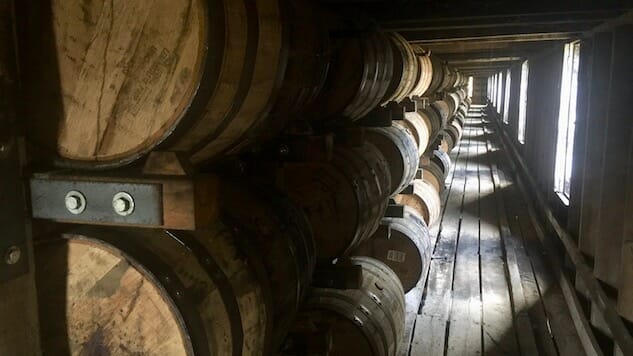Rapidly Aging Whiskey With Science

Top-shelf whiskeys, rums and brandies owe much of their flavor to the length of time they spend aging in wooden barrels. But a group of researchers from Spain recently experimented with a scientific shortcut to the aging process and it involved blasting brandy with ultrasonic waves.
The chemistry responsible for aging alcohol is complex and difficult to speed up. Distillers use words like “extraction,” “esoterification” and “oxidation” to describe the intricate processes that result in high-end spirits. In a nutshell, it goes something like this: as immature booze ages, phenols and acids in the liquor latch onto alcohol to form molecules called esters, which contain much of the aroma and flavor associated with aged spirits. Meanwhile, as the wood from the barrel breaks down, a cocktail of tannins, pigments and sugars are released into the distillate. Essentially, the more time afforded for these processes to take place, the smoother and tastier the booze.
Research has shown that adding ultrasonic waves into the mix can be a little like hitting the fast-forward button. In a recent study, scientists pumped immature brandy through a glass tube filled with American oak chips. As the liquor flowed through the tube it was blasted with ultrasonic waves to forcefully infuse woody flavors into the liquid.
According to the researchers, their tipple time-machine is capable of churning out a brandy in three days that has the characteristics of one that has been aged for two years. The ultrasonic-aged brandies were chemically analyzed and taste tested. “They tasted surprisingly well, with good fruity and sweet flavors and a high aromatic intensity,” says study co-author Valme García, a professor at the University of Cádiz in Spain.
So does this mean that we’ve cracked the code for rapidly aging booze? Well, not really. “The use of ultrasound to mature spirits is not a new idea,” explains Bryan Davis of Lost Spirits Distillery, a company known for utilizing innovative tech to produce some of the most unique booze in the world. While this may be the first time the technique has been used on brandy, the process was actually patented back in 1934. Waiting for spirits to age traditionally can be costly, so some distillers, like South Carolina’s Terresentia, have turned to technology to help get their products from barrel to shelf in a hurry.
-

-

-

-

-

-

-

-

-

-

-

-

-

-

-

-

-

-

-

-

-

-

-

-

-

-

-

-

-

-

-

-

-

-

-

-

-

-

-

-








































